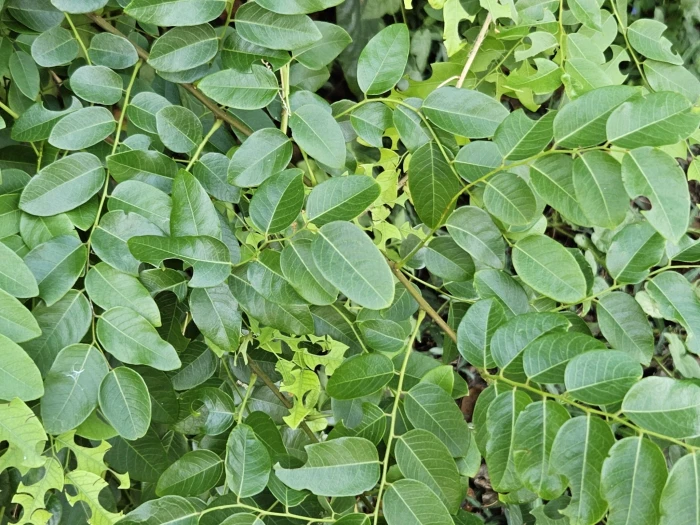Black Honey Shrub
(Phyllanthus reticulatus)
Black Honey Shrub (Phyllanthus reticulatus)
/
/

Yu-Chang Chen
CC BY 4.0
Image By:
Yu-Chang Chen
Recorded By:
Copyright:
CC BY 4.0
Copyright Notice:
Photo by: Yu-Chang Chen | License Type: CC BY 4.0 | License URL: http://creativecommons.org/licenses/by/4.0/ | Rights Holder: Yu-Chang Chen | Publisher: iNaturalist | Date Created: 2023-07-25T09:14:44-07:00 |

























Estimated Native Range
Climate Requirements
| • Precipitation | 4" - 171" |
| • High Temp. | -38°F - 111°F |
| • Low Temp. | -59°F - 74°F |
Summary
Phyllanthus reticulatus, commonly known as Black Honey Shrub, is a deciduous shrub native to a variety of habitats including tropical and subtropical forests, riverbanks, and open woodlands across Asia and Northern Australia. It has been introduced to Jamaica. This species can reach up to 16 feet in height and features light reddish-brown or grey-brown stems. The leaves are small, green, and arranged in a feather-like pattern. Phyllanthus reticulatus blooms with inconspicuous greenish-white flowers that are pollinated by Epicephala moths, which have a unique mutualistic relationship with the plant, laying eggs in the flowers’ ovaries.
The Black Honey Shrub is not commonly cultivated but may be of interest for its medicinal properties, as many Phyllanthus species are used in traditional medicine. It requires minimal care, thriving in full sun to part shade and tolerating a range of soil types, provided they are well-drained. It is drought-tolerant once established. In cultivation, it could be used for naturalizing in subtropical gardens or as part of a medicinal plant collection. However, caution is advised as Phyllanthus reticulatus is potentially invasive in some regions. Before planting it outside of its native range, it is crucial to check local regulations.CC BY-SA 4.0
The Black Honey Shrub is not commonly cultivated but may be of interest for its medicinal properties, as many Phyllanthus species are used in traditional medicine. It requires minimal care, thriving in full sun to part shade and tolerating a range of soil types, provided they are well-drained. It is drought-tolerant once established. In cultivation, it could be used for naturalizing in subtropical gardens or as part of a medicinal plant collection. However, caution is advised as Phyllanthus reticulatus is potentially invasive in some regions. Before planting it outside of its native range, it is crucial to check local regulations.CC BY-SA 4.0
Plant Description
- Plant Type: Shrub, Tree
- Height: 10-12 feet
- Width: 8-10 feet
- Growth Rate: Slow, Moderate
- Flower Color: Green, White
- Flowering Season: Summer, Fall
- Leaf Retention: Evergreen
Growth Requirements
- Sun: Full Sun
- Water: Medium
- Drainage: Fast, Medium
Common Uses
Bee Garden, Bird Garden, Butterfly Garden, Hedges, Low Maintenance
Natural Habitat
Native to tropical and subtropical forests, riverbanks, and open woodlands across Asia and Northern Australia
Other Names
Common Names: Black Honey Shrub, Netted Leaf Phyllanthus
Scientific Names: Phyllanthus reticulatus, Anisonema dubium, Anisonema intermedium, Anisonema jamaicense, Anisonema multiflorum, Anisonema puberulum, Anisonema reticulatum, Anisonema wrightianum, Anisonema zollingeri
GBIF Accepted Name: Phyllanthus reticulatus